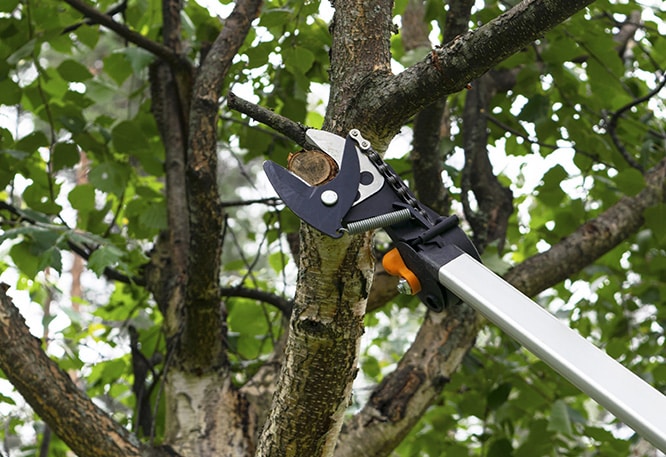Pruning Trees and Shrubs – Pruning Tips For Homeowners
January 30, 2024

Trees and shrubs require regular pruning in order to remain healthy, attractive, and safe. Understanding basic pruning techniques will enable homeowners to do it themselves.
Pruning should take place as early as possible after winter pruning of oaks (to prevent Oak Wilt) and March through early April for deciduous shrubs and roses to minimize cold injury and speed up wound closure. This timeframe offers optimal conditions to promote rapid wound closure. If you need help with this, Toledo Tree Service can help with this; feel free to contact them today.
Pruning in the Winter
Dead, diseased or broken branches should be cut away to increase airflow, reduce moisture accumulation and help protect against fungal pathogens. By opening up the crown by thinned it will allow greater air circulation while helping prevent fungal pathogens from taking hold in its environment.
Winter pruning encourages new growth while strengthening and more resiliently protecting a tree’s structure from storm damage and winds. Pruning also removes weak limbs which could pose safety threats such as those hanging over homes or power lines; it helps ensure homeowner protection.
Pruning woody ornamentals like hollies and boxwoods during this colder time is also ideal, since its easier to see their shapes when leaves have fallen from plants, as well as lessen bleeding from cuttings that need to be performed, helping heal more quickly. Furthermore, cold temperatures reduce bleeding due to pruning cuts as well as helping plants heal wounds more quickly than otherwise possible.
But, spring-flowering trees and shrubs should only be pruned once their blossoms appear; pruning before this point could remove flower buds that help produce blossoms during bloom time, leading to poor spring blossom production. Pruning during this season also serves as a good opportunity to inspect the planting site and look out for pest issues like tent caterpillar eggs or moth nests that could require removal or treatment.
Spring Pruning
Pruning can bring numerous advantages for landscape plants. Pruning regularly can increase plant health, decrease pest infestation risk and enhance aesthetic appeal – so it’s crucial that gardeners understand when and why to prune.
At home in the Midwest, ornamental bushes such as butterfly bushes typically respond best to late winter pruning. If cut too early, their hollow stems may fill with water, freeze, and eventually die – leaving an unhealthy plant behind that doesn’t produce healthy growth again. Pruning in late winter allows it to reestablish itself successfully and promote new life growth in its place.
Pruning trees can also help protect property against overhanging branches that could fall during storms and stop invasive species from taking hold of your tree, while cutting away damaged or diseased branches can prevent infectious agents from invading its entirety.
Summer Pruning
Maintaining well-manicured trees is vitally important to surviving summer storms, offering great visibility for drivers and pedestrians, and protecting overhead utility lines from harm. Pruning for clearance works best during the summer when tree crowns have fully leafed out so you can easily see their extent, making it easier to selectively prune off branches necessary to protect both property and utility lines from harm.
In summer, you can also use heading cuts to remove water sprouts and suckers with ease. This pruning method reduces canopy size by cutting off the tips of branches while redistributing growth hormone auxin to spur side shoot growth.
Pruning trees should take place prior to their terminal buds forming, which indicates that all their leaves for the season have fallen out. Otherwise, pruning too early will mean less flowering or fruit production in springtime.
Fall Pruning
Trees and shrubs flourish when regularly pruned. Pruning keeps plants looking their best while reducing safety risks posed by overgrowth, such as overgrown roots damaging septic tanks, sidewalks, driveways or breaking nearby structures in storms; dead branches potentially breaking nearby structures during storms; diseased or broken branches spreading spores to other plants in your yard etc.
Eliminating all dead, dying or damaged branches on a tree is essential to ensure water and nutrients that were being consumed by these branches are distributed back into healthy ones, while also helping prevent insect and disease issues.
Pruning many plants should take place during their dormancy in winter; however, some types of summer-blooming shrubs must be pruned after blooming to preserve their flower buds; fall pruning is acceptable as long as this occurs before winter arrives.